Abstract
This paper presents results from the characterization of vehicle exhaust that were obtained primarily within the Swedish Urban Air Project, "Tätortsprojektet." Exhaust emissions from both gasoline- and diesel-fueled vehicles have been investigated with respect to regulated pollutants (carbon monoxide [CO], hydrocarbon [HC], nitrogen oxides [NOx], and particulate), unregulated pollutants, and in bioassay tests (Ames test, TCDD receptor affinity tests). Unregulated pollutants present in both the particle- and the semi-volatile phases were characterized. Special interest was focused on the impact of fuel composition on heavy-duty diesel vehicle emissions. It was confirmed that there exists a quantifiable relationship between diesel-fuel variables of the fuel blends, the chemical composition of the emissions, and their biological effects. According to the results from the multivariate analysis, the most important fuel parameters are: polycyclic aromatic hydrocarbons (PAH) content, 90% distillation point, final boiling point, specific heat, aromatic content, density, and sulfur content.
Full text
PDF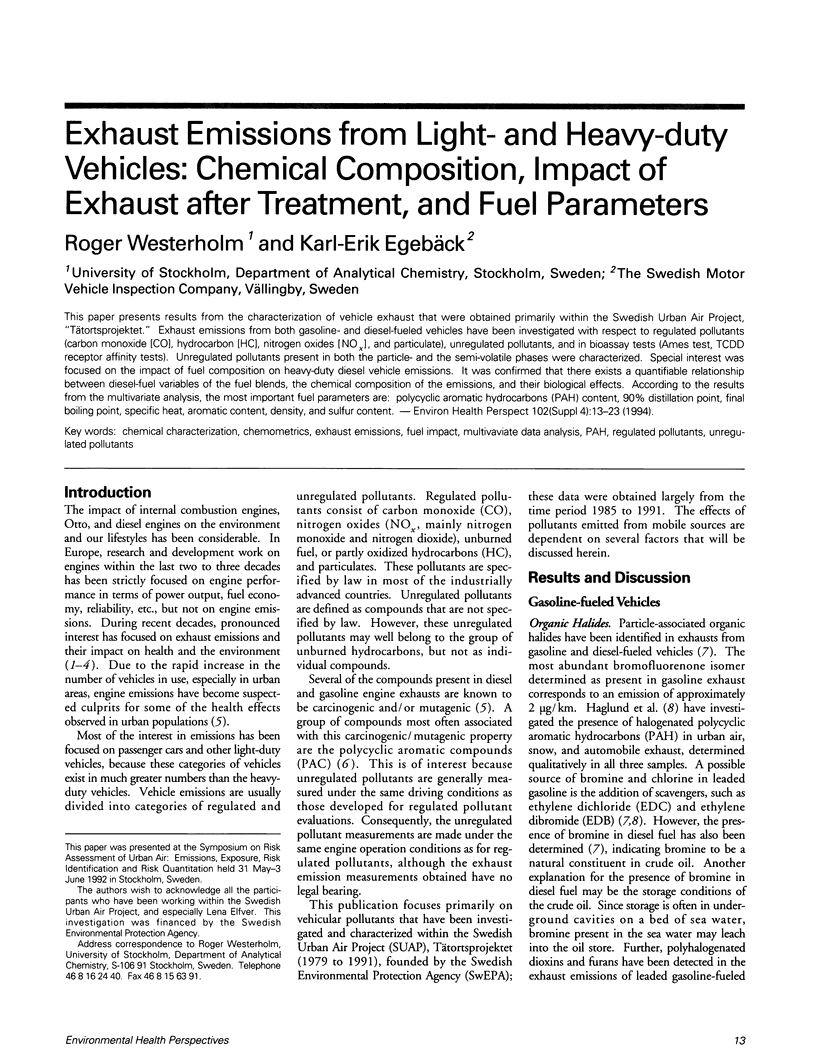
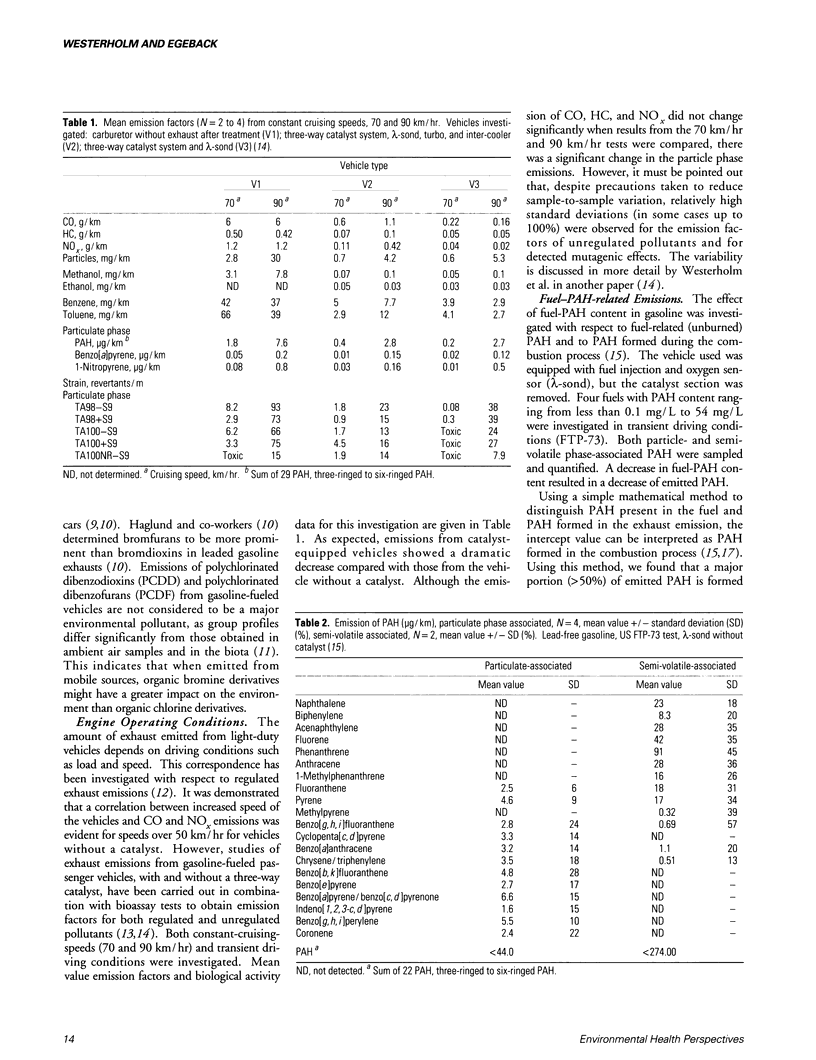
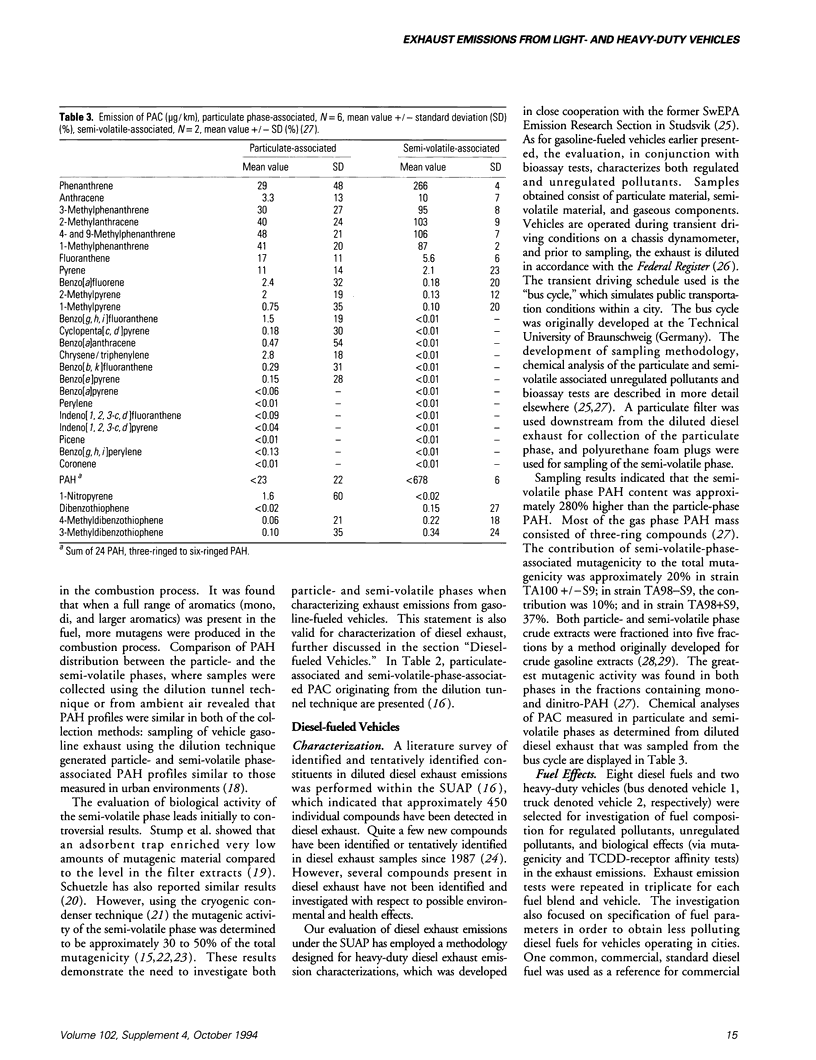
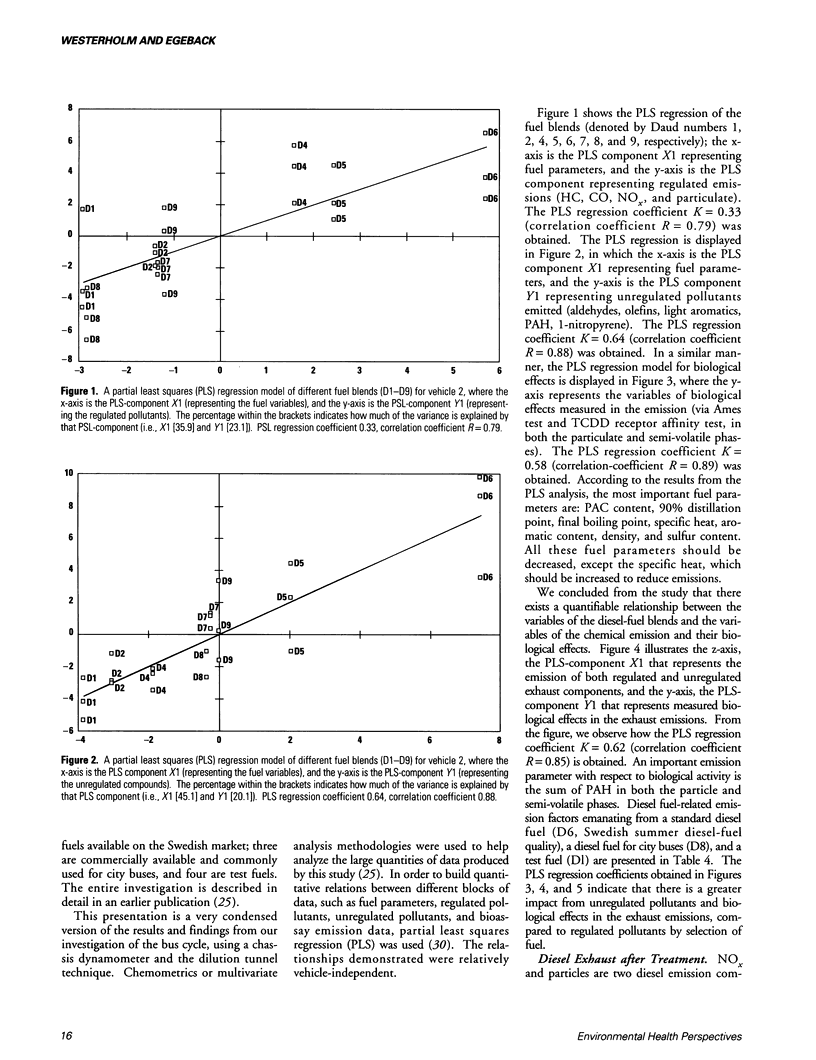
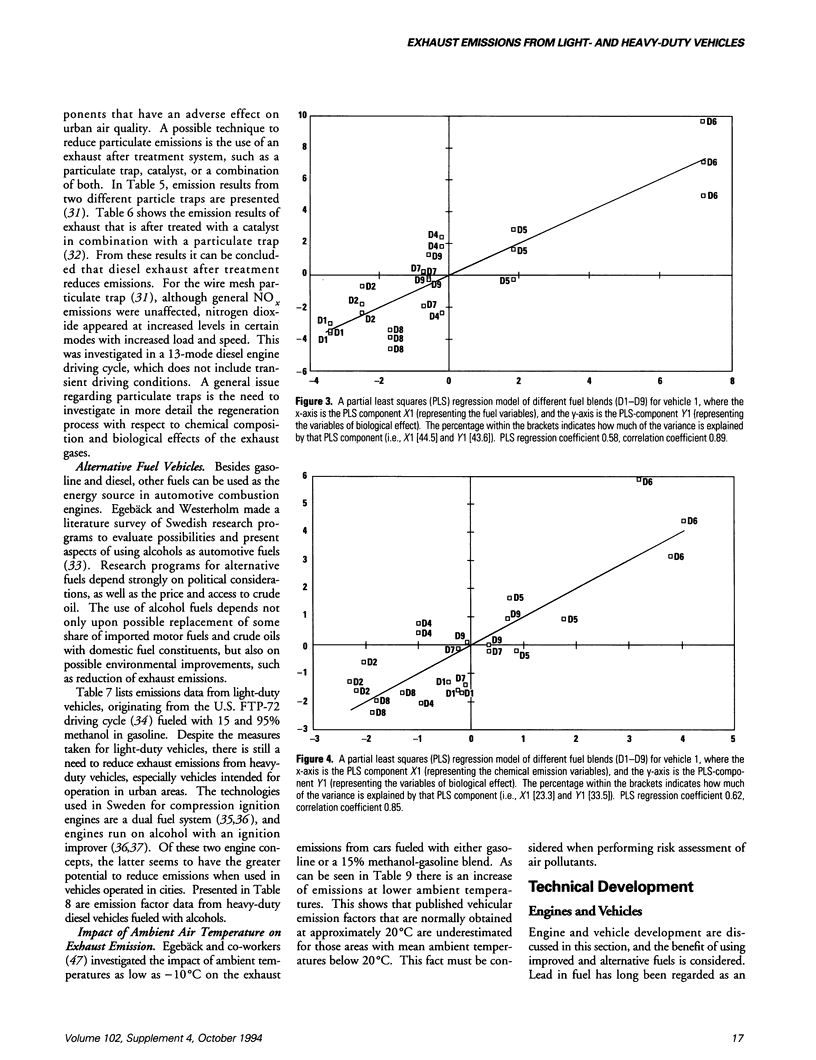

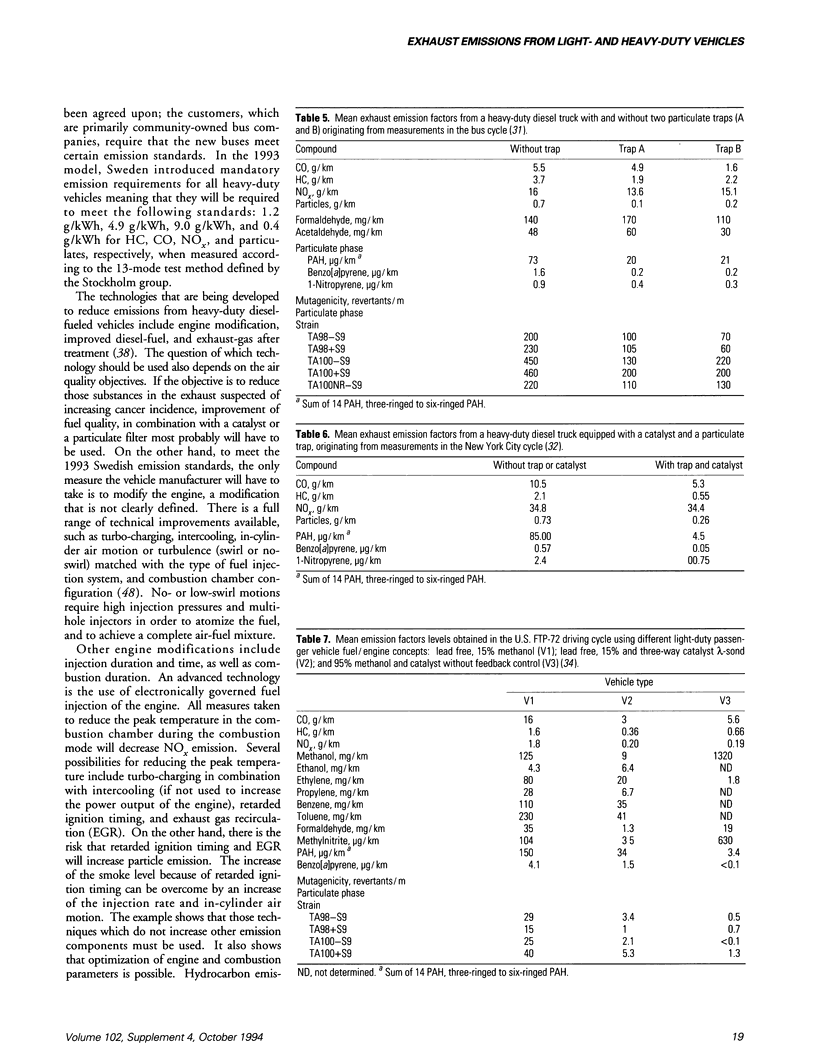
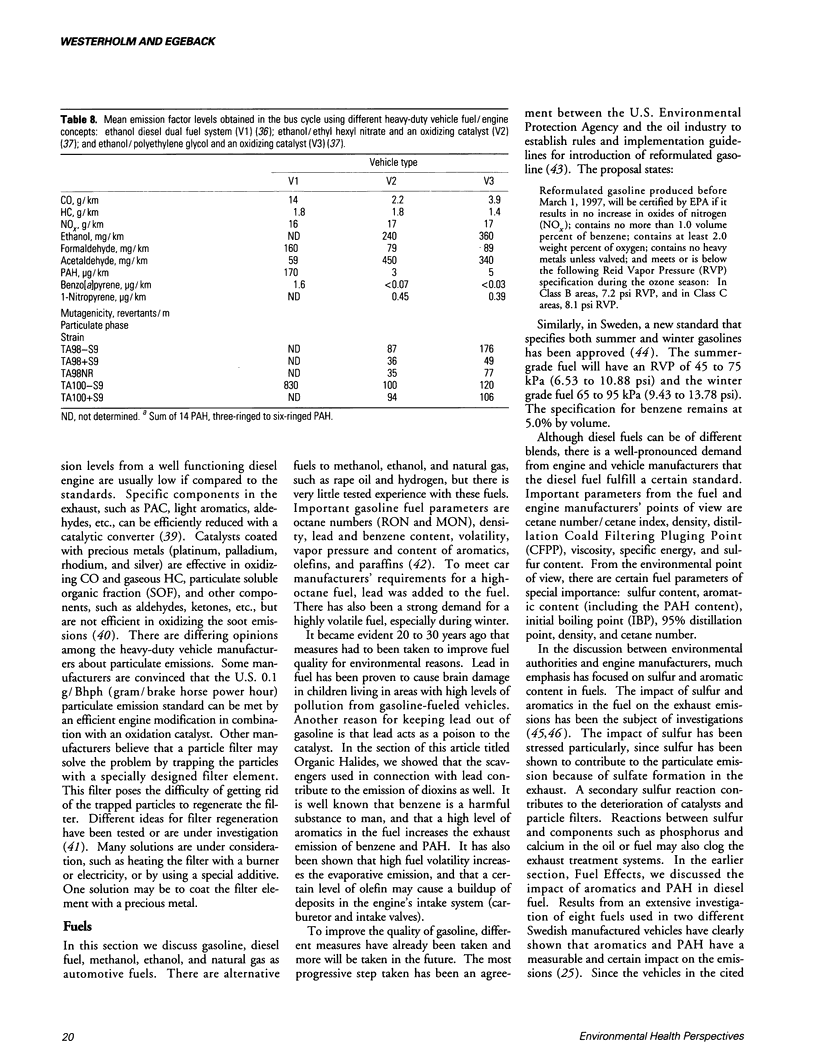
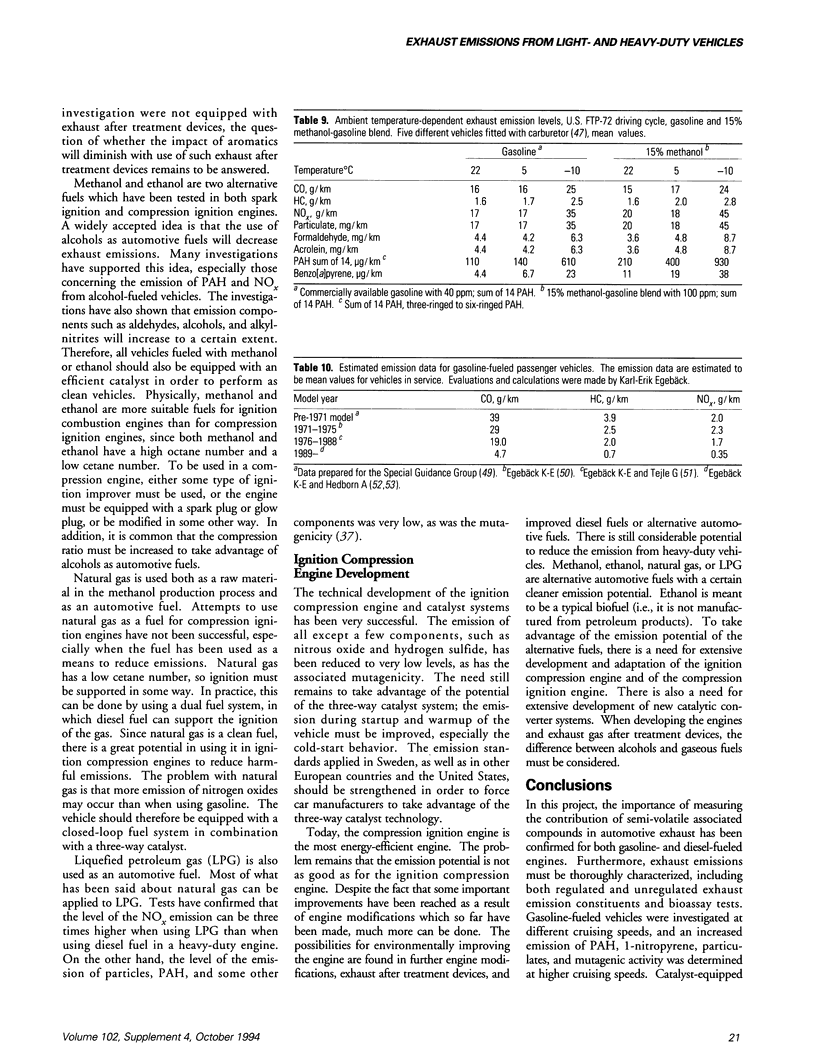
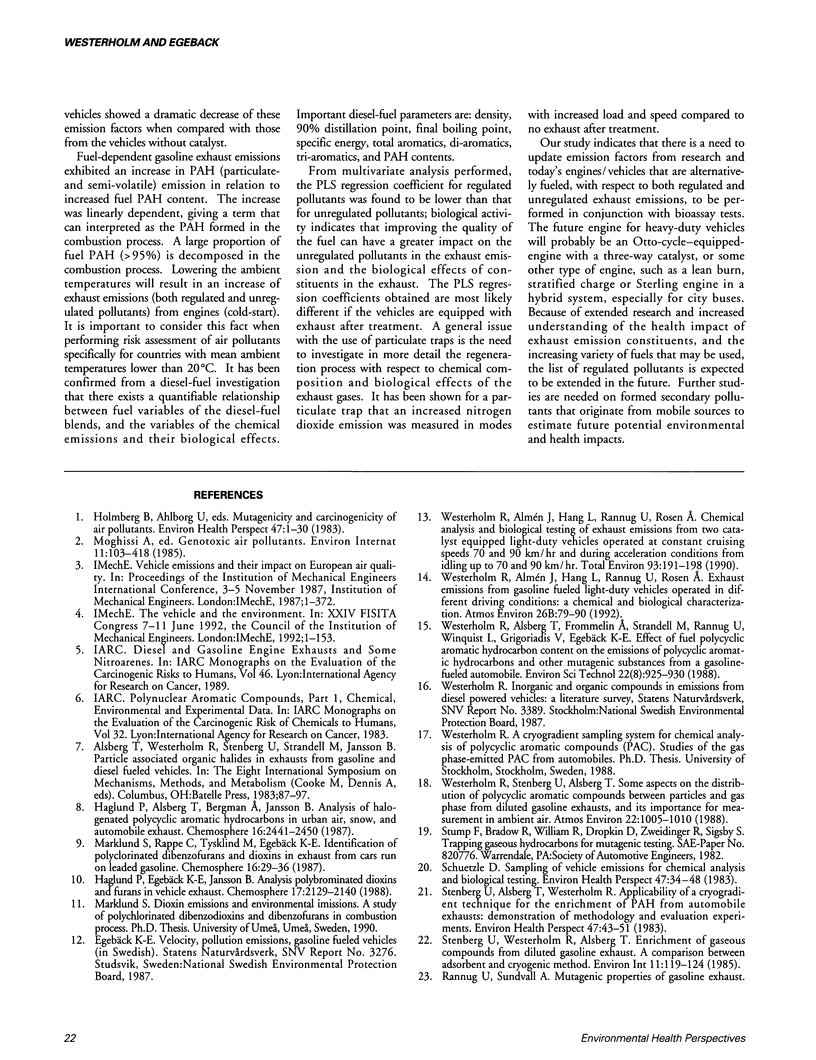
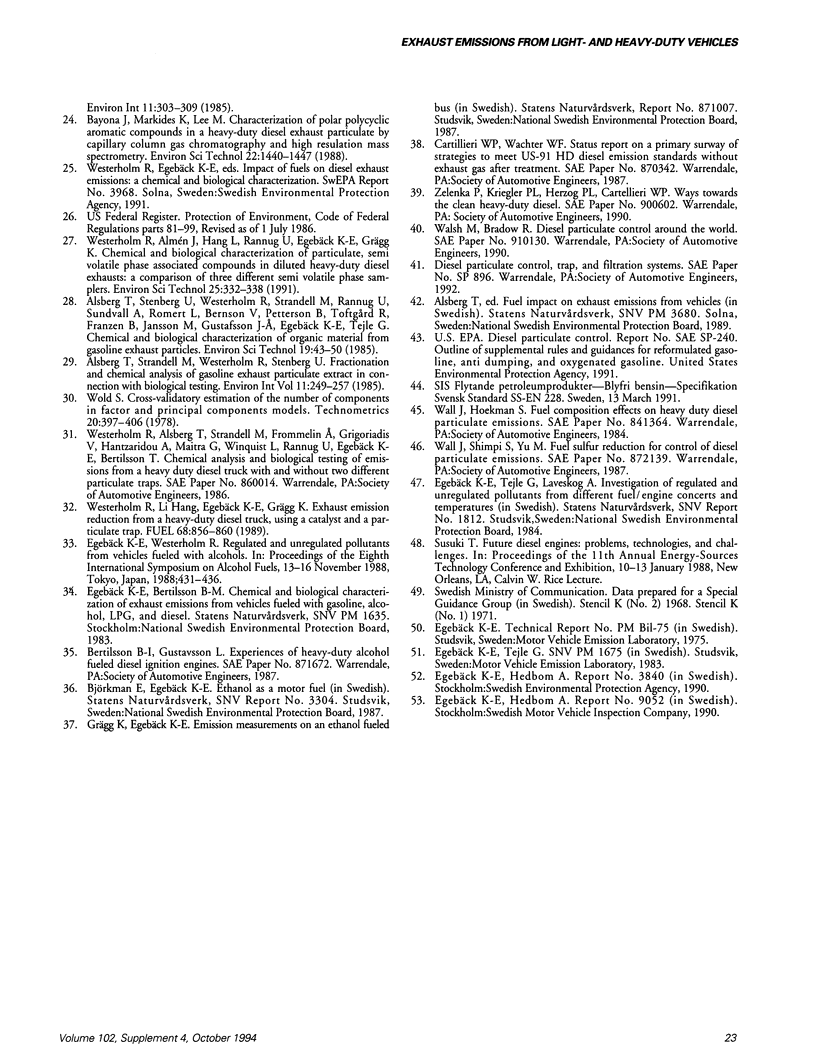
Selected References
These references are in PubMed. This may not be the complete list of references from this article.
- Rosen H. R., Tüchler H. Pulmonary injury in acute experimental pancreatitis correlates with elevated levels of free fatty acids in rats. HPB Surg. 1992;6(2):79–90. doi: 10.1155/1992/92916. [DOI] [PMC free article] [PubMed] [Google Scholar]
- Stenberg U., Alsberg T., Westerholm R. Applicability of a cryogradient technique for the enrichment of PAH from automobile exhausts: demonstration of methodology and evaluation experiments. Environ Health Perspect. 1983 Jan;47:43–51. doi: 10.1289/ehp.834743. [DOI] [PMC free article] [PubMed] [Google Scholar]


